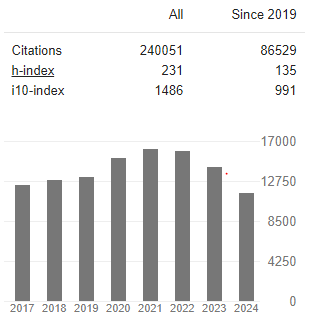Clinical Significance and Potential Function of S100a10 in Lung Adenocarcinoma
Abstract
Jiyan Dong, Yi Qun Che, Han Bing Li, Li Liu, Di Shen, Xin Wang, Xujie Sun, Lin Yang
Objective To investigate the clinical significance and potential function of S100A10 in lung adenocarcinoma.
Methods: The RNAseq data of lung adenocarcinoma tissues and normal lung tissues in The Cancer Genome Atlas (TCGA) database and Genotype-Tissue Expression (GTEx) project were obtained from the UCSC Xena. The correlation between S100A10 expression and clinic pathological features in patients with lung adenocarcinoma was analyzed. The Metascape database was used for Gene Ontology (GO) enrichment analysis of S100A10-related genes. Another 32 pairs of lung adenocarcinoma and matched lung tissues were selected to verify the expression of S100A10 protein by immunohistochemistry.
Results: The expression of S100A10 in lung adenocarcinoma tissues was significantly higher than that in normal lung tissues on RNA (P<0.001) and protein (P=0.009) levels, and the RNA expression level in lung adenocarcinoma tissues was significantly correlated with tumor stage (P=0.004), lymph node metastasis (P=0.0002), overall survival (P=0.002) and disease-free survival (P=0.011). GO enrichment analysis showed that S100A10 related genes were significantly enriched in terms of cell adhesion, suggesting that S100A10 may be mainly involved in the process of cell adhesion in lung adenocarcinoma. Conclusion S100A10 is highly expressed in lung adenocarcinoma and is significantly correlated with some clinic pathological features, overall survival (OS) and disease-free survival (DFS) by Kaplan–Meier (K–M) analysis, indicating a potential biomarker for diagnosis and prognosis for lung adenocarcinoma.



